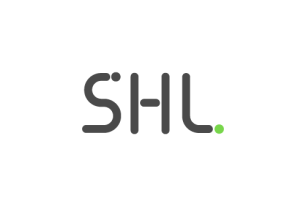Going Back to School—What Can We Learn From Schools and Teachers Adopting AI-Powered Reports?
Many educational institutions start adopting AI-powered reports to create personalized feedback. What does this mean for talent acquisition?
Share
The education sector is not usually known for pivoting or adopting new technologies ahead of other well-funded private sector organizations. However, AI seems to be bucking the trend. With the rise of ChatGPT and the increase in teachers’ dissatisfaction over pay and workload, the education sector seems to be moving at a faster pace than other sectors to capitalize on the benefits that AI can bring.
How are schools using AI?
Let me take you back to school, it is the end of the term, and your teachers are writing reports for you to take home. Until now, you have successfully kept that misdemeanor a secret and your parents do not yet know exactly how many pieces of homework your poor non-existent dog has eaten (somebody takes that dog to the vet!). The end-of-term report acts as a tell-all celebrity autobiography, revealing your second life outside of the family home and how well you are performing against your peers or performance indicators. It is personalized to you and includes relevant tips or suggestions from the teacher as to how to improve.
A wave of schools are now adopting AI-powered tools for teachers in order to reduce the painstaking process of personalized reports. So what can talent acquisition organizations and teams learn from this?
For starters, although ChatGPT has exploded into pop culture, there are still many limitations that make it unreliable, the main of which is that it cannot remember you and your “voice”. Therefore, the first thing we can learn from other sectors is that ChatGPT is not the answer, at least not yet, and actually other technologies and tools are being implemented instead.
So what is being implemented?
ChatGPT works such that I, as the human, interacts with the AI model/ program directly. I directly type or search for something and see a response. API technology (Application Programming Interface) however is different. API applications work such that I interact with a computer, which talks to an AI program on my behalf. Essentially my computer acts as a moderator between me and the AI program it is drawing responses from. And why does this matter you ask? Because instead of simply asking ChatGPT to produce a report for Timmy, an API AI program can start to learn which phrases I most commonly use or search for. It starts to become personalized to me, learning my tone of voice and my language.
While the likes of ChatGPT can produce accurate statements or responses to a given input, it is open for everyone to use and therefore is less useful in being consistent with you and your needs. With an API AI tool, I can save frequently used phrases and “bank” them for next time should I need to write in the same context again. I can then draw on these quickly in the future and begin to refine these over time, making the process of producing reports easier and more efficient. I can turn my bullet points into succinct paragraphs.
A wave of schools are now adopting AI-powered tools for teachers to reduce the painstaking process of personalized reports.
What does this look like for talent acquisition?
Currently, many organizations are conducting or have made the move towards virtual assessment centers SHL’s digital assessment center solution allows organizations to run simulated exercises and live interviews which are both assessor and candidate friendly. Assessors simply rate candidates on the platform without the need to transfer handwritten notes or aggregate comments across multiple assessors manually. Yet, for some organizations, there is still the need to produce personalized feedback reports to enhance the candidate experience. This is where these API applications come in, making the end-of-end process of assessing and giving feedback to candidates much easier. All with the added benefit of being able to build up a bank of commonly used key themes that can be used at the click of a button where multiple candidates show the same strengths and development areas.
While I think that ChatGPT and other applications can serve a purpose and we can learn from others in the industry on how and when best to use them, as talent acquisition specialists, we need to branch out and look to different sectors as to what is working. For me personally, I will be doing my homework on what is out there and what can aid my day-to-day tasks without taking away my voice.
Check out our talent acquisition solution and learn how we can help you build a talent strategy that lasts.










